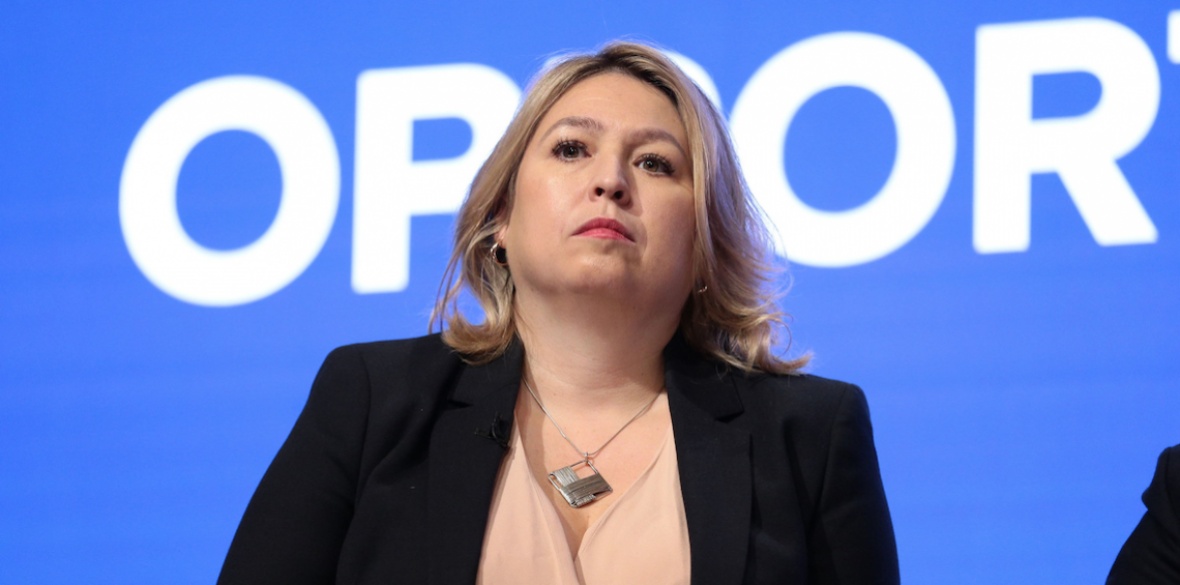This is the last article you can read this month
You can read more article this month
You can read more articles this month
Sorry your limit is up for this month
Reset on:
Please help support the Morning Star by subscribing here
KAREN BRADLEY’S comments in defence of the Parachute Regiment soldiers responsible for Bloody Sunday were not just insensitive, they gave away the sense of impunity with which successive Westminster governments have ignored pleas for accountability, transparency and justice.
But the fact that she drew attention to the idea that British forces — the military, the Royal Ulster Constabulary and their reserve forces — were not acting outside of the law is telling.
As Frank Kitson, a senior military strategist in Northern Ireland, advised, the “law should be used as just another weapon in the government’s arsenal.”
If the ordinary soldiers themselves are not guilty of crimes because they were carrying out a premeditated task, where does the buck stop?
Despite the running of British military death squads like the Military Reaction Force, collusion between the RUC and British army units and loyalist murderers and strong evidence of a shoot-to-kill policy, the number of security force members prosecuted has been painfully low — particularly in comparison to the thousands of Irish republicans, civil rights activists, loyalist paramilitaries and even elected representatives imprisoned and interned during the conflict.
Just four serving British soldiers were jailed for crimes committed in Northern Ireland: two in 1981 for the 1972 “Pitchfork Murders,” two for the 1992 murder of an 18-year-old in Belfast. All four were released within five years and allowed to rejoin the British army, to the outrage of the families of the victims.
The multitude of evidence that emerged thanks to the Saville inquiry — documentary evidence becoming available and testimony from subpoenaed witnesses — allowed for a forensic revision of the official narrative of Bloody Sunday.
Academic Niall O Dochartaigh used such evidence to argue against received wisdom that Bloody Sunday was a catastrophic error, an accident unforeseen by military officers and British ministers alike.
Actually, as O Dochartaigh showed, Bloody Sunday was neither a mistake, nor a reaction to hooliganism and military or political fear of IRA activity.
Declassified papers show a clear desire, particularly from Commander Land Forces General Robert Ford, to go into Derry all guns blazing, pick off the “Derry Young Hooligans” and “shoot selected ringleaders.”
With the 1 Para unit’s reputation for brutality secured by the Ballymurphy Massacre less than six months prior, where it killed 10 people in West Belfast including a priest giving a victim his last rites, Ford’s decision to send them to Derry that day was intentional.
As the soldiers rushed into the Bogside to attack the civil rights demonstration, Ford shouted: “Go on the Paras, go and get them.”
Bradley’s comments are a continuation of the Heath government’s post-facto cover-up. Heath himself saw the Widgery Report as part of a “propaganda war,” while then home secretary Reginald Maudling was rightly smacked in the chamber by Bernadette Devlin for claiming the Parachute Regiment were fired on first.
Hidden from view, there was an existing agreement between the attorney general and Ministry of Defence which reassured senior military officers that soldiers would not face prosecution.
Bradley’s comments that the 90 per cent of killings carried out by paramilitaries were crimes, but the 10 per cent carried out by the security forces were not leaves a glaring question — what about those of the 90 per cent carried out by paramilitaries where a member of the security forces was involved in the planning or execution of the murder?
There are many examples of British security forces’ collusion with loyalist death squads, from the mid-1970s “Glenanne Gang” consisting of UVF paramilitaries, UDR soldiers and RUC reservists carrying out sectarian murders, to the involvement of military and RUC agents in the assassinations of high-profile political activists and lawyers.
Despite two investigations into collusion — the Stevens inquiry (during which a police archive suspiciously burnt down) and Cory report — no full judicial inquiry has been held into the murder of Pat Finucane, one that, like Saville, could subpoena witnesses and would have a greater chance at ascertaining the extent of political knowledge and direction of collusion.
While Stevens and Cory showed that the RUC leaked intelligence about targets like lawyers Pat Finucane and Rosemary Nelson, and RUC officers enjoyed boasting to republican prisoners that they were going to take out Finucane who represented many of them, there has been no redress for political culpability.
Some campaigners believe the trail goes to the heart of government; then Home Office minister Douglas Hogg implied that Finucane was “sympathetic to the cause of the IRA” just weeks before his murder.
British commentators might do well to practise caution when accusing civil and human rights activists of IRA sympathising.
In cases like that of the Glenanne Gang, it wasn’t just that a few individual RUC and UDR reservists were actively carrying out sectarian murders, but evidence gathered by the (now defunct) Historical Enquiries Team indicated that the RUC was intentionally lenient when investigating these sectarian murders.
When John Weir was murdering SDLP councillors in rural Armagh and Tyrone, was he doing so with his RUC or UVF hat on? When James Mitchell was storing bombs on his farm for use during the bloodiest day of the Troubles — the Dublin and Monaghan bombing in May 1974 — was he doing so as an RUC officer or as a paramilitary?
Were these not crimes, according to Karen Bradley’s logic, because serving policemen were involved?
As Nuremburg Principle number four underlines, carrying out murder pursuant with government or superior instruction is no defence. But in cases like the 1982 “shoot-to-kill” scandal, there is evidence that individual policemen were prosecuted (later found not guilty) to take the blame for an RUC policy to kill unarmed terror suspects — a task for which they had been specifically trained.
During subsequent investigations, Greater Manchester Police investigator John Stalker found that the Official Secrets Act was being used to stop individual policemen contradicting the official RUC line about the extent of a “shoot-to-kill” policy.
A clever use of the law, to circumvent the law.
Stormont has been in stasis for two years, leaving the people of Northern Ireland without representation and with direct rule from Westminster.
The government’s mishandling of Brexit rides roughshod over the democratic rights of Irish citizens both sides of the border.
The fact that only now are coroner’s inquests taking place into the Ballymurphy Massacre, along with the replacement of the Historical Enquiries Team with the inadequate legacy branch to deal with legacy investigations, speaks to an utter failure to allow ordinary citizens to access institutions that can provide them with a degree of truth and justice.
Bradley’s eminently dangerous attempts to rewrite history indicate exactly why such obstructions are in place — it is not just individual soldiers, but British state institutions, responsible for the many murders, injuries and miscarriages of justice that have never had their day in court.
And the occasions are very rare indeed when those same institutions can be expected not to collude and cover up.









